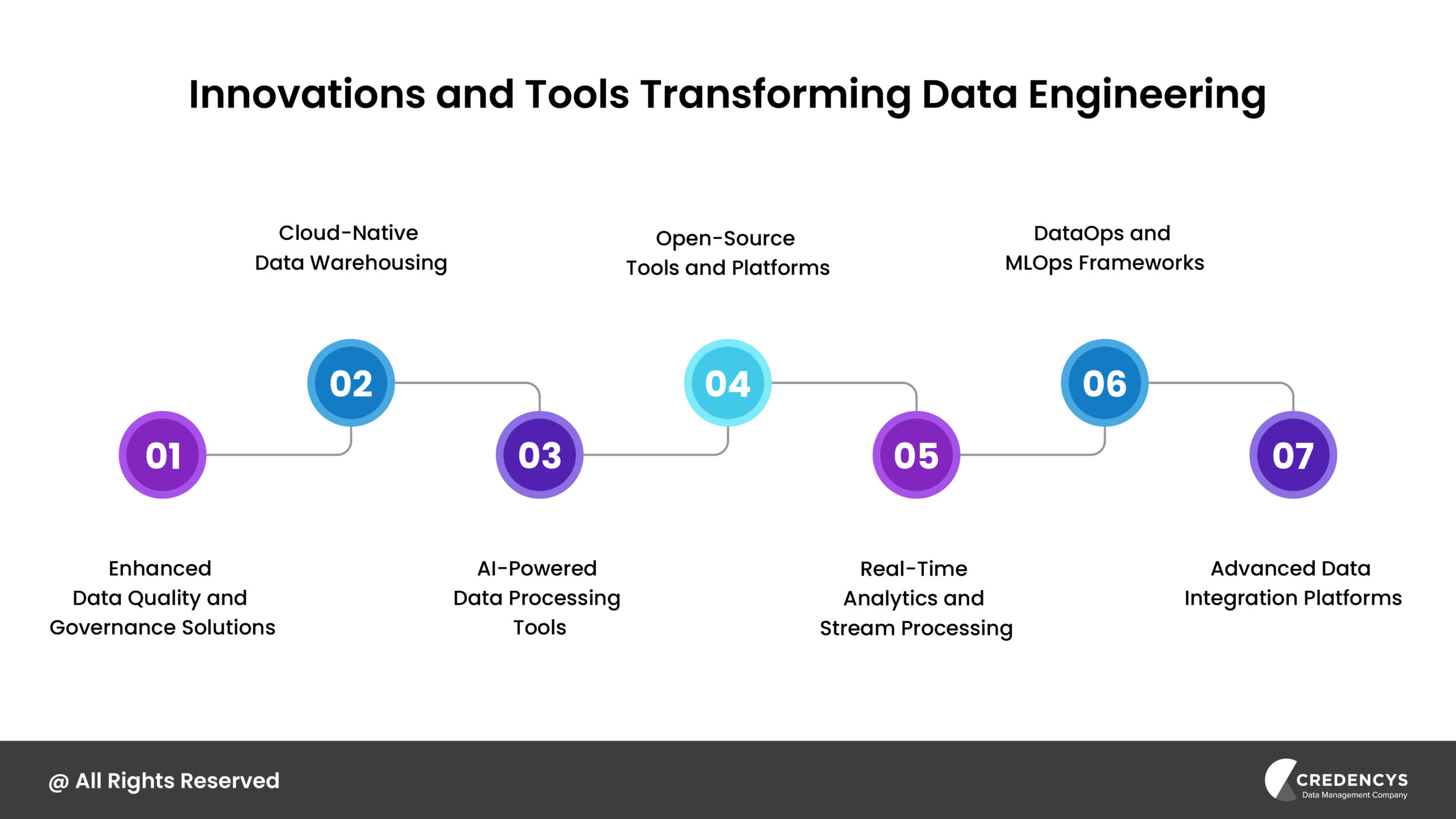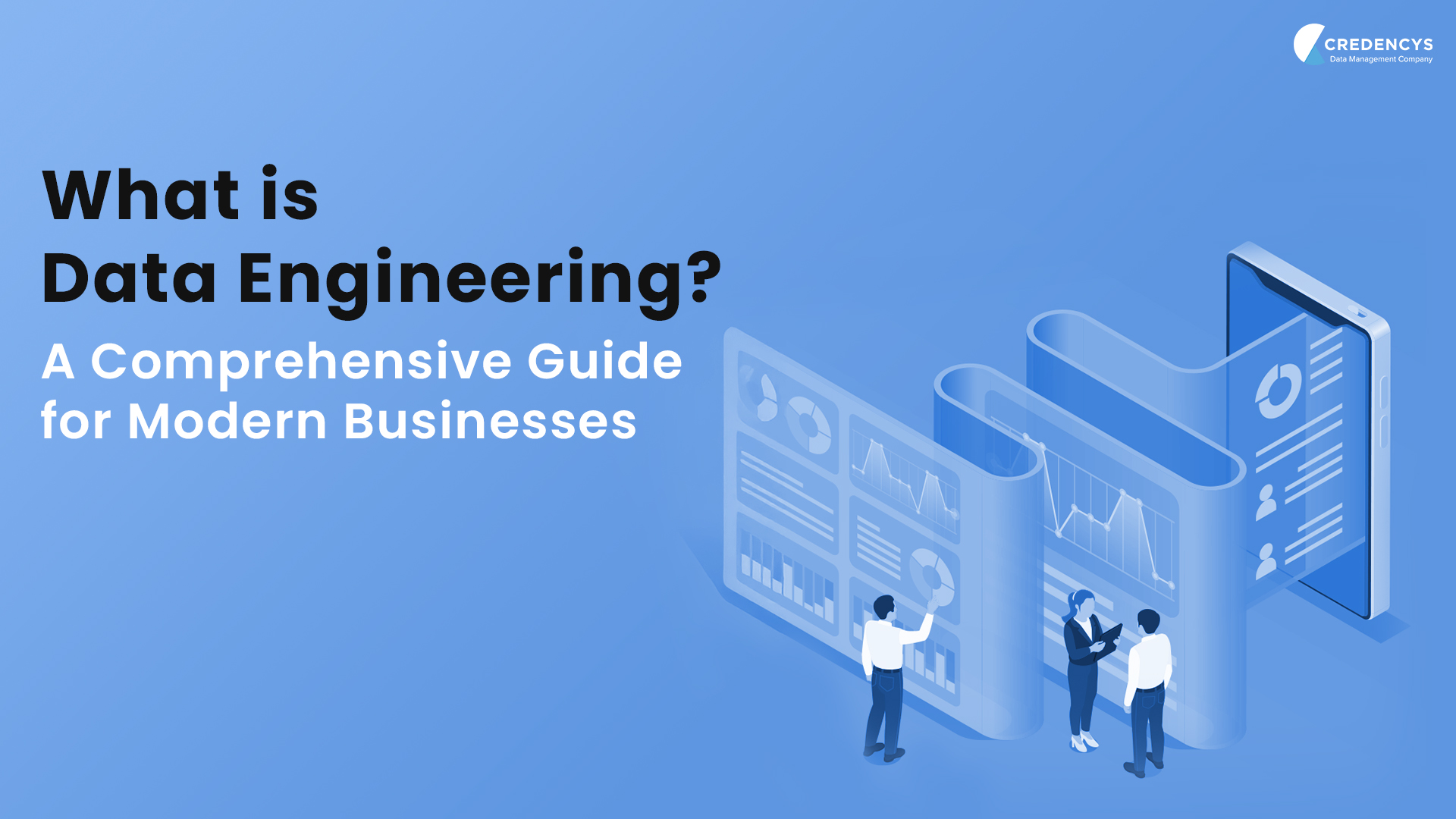What is Data Engineering? A Comprehensive Guide for Modern Businesses
Organizations these days, generate and collect vast amounts of information from various sources. Effectively harnessing this data is crucial for gaining actionable insights and maintaining a competitive edge.
This is where data engineering comes into play.
What is Data Engineering?
Data engineering is the practice of designing and building systems for collecting, storing, and analyzing data at scale. It involves creating architectures and infrastructures that enable the efficient flow and access of data across an organization.
By transforming raw data into well-organized and accessible formats, data engineers empower stakeholders including executives, data scientists, and analysts to make informed decisions based on reliable data. Basically, data engineering serves as the backbone of modern data strategies, ensuring that organizations can effectively utilize their data assets to drive innovation and maintain a competitive advantage in an increasingly complex data landscape.
Core Components of Data Engineering
Data engineering involves several key components that work together to enable efficient data handling and analysis.
1. Data Governance and Security
Ensuring data security and compliance with regulations is paramount. Data governance encompasses policies and procedures that manage data availability, usability, integrity, and security.
Data engineers implement access controls, conduct audits, and monitor data usage to protect sensitive information and maintain compliance with standards such as GDPR and HIPAA.
2. Data Processing and Transformation
Raw data often contains inconsistencies or is in formats unsuitable for analysis. Data processing and transformation address these challenges by cleaning, normalizing, and structuring data.
This step ensures that data is accurate, reliable, and ready for analytical tasks. Techniques such as data validation, deduplication, and enrichment are commonly employed to enhance data quality.
3. Data Pipeline Development
Data pipelines are automated workflows that move data from source systems to destination systems, such as data warehouses or analytics platforms. Developing robust data pipelines involves orchestrating various processes, including extraction, transformation, and loading (ETL).
Efficient data pipelines are scalable, fault-tolerant, and capable of handling real-time data flows, ensuring that users have timely access to up-to-date information.
4. Data Collection and Integration
This initial phase involves gathering raw data from various sources such as databases, APIs, sensors, and logs. Data engineers employ automated extraction techniques to ensure comprehensive and accurate data acquisition.
Once collected, data from disparate sources is consolidated into a unified system, facilitating seamless access and analysis. Effective integration ensures data consistency and reliability, which are essential for accurate analytics and reporting.
5. Data Storage Solutions
Selecting the appropriate storage architecture is crucial for efficient data management. Depending on the nature and intended use of the data, options include:
- Databases: Ideal for structured data requiring online transaction processing (OLTP). Relational databases offer strong ACID (Atomicity, Consistency, Isolation, Durability) guarantees, while NoSQL databases provide flexibility for unstructured data and horizontal scalability.
- Data Warehouses: Designed for structured data and optimized for online analytical processing (OLAP). They support complex queries and are integral to business intelligence and reporting activities.
- Data Lakes: Serve as centralized repositories capable of storing vast amounts of structured, semi-structured, and unstructured data. Data lakes are essential for big data analytics and machine learning applications.

The choice among these storage solutions depends on factors such as data structure, access patterns, and specific organizational requirements.
Emerging Trends in Data Engineering
As of 2025, data engineering is undergoing significant transformations driven by technological advancements and evolving business needs. Key trends shaping the field include:
1. Focus on Data Governance and Security
With increasing data breaches and stringent regulations, robust data governance and security have become paramount. Implementing comprehensive policies, access controls, and compliance measures ensures data integrity and builds customer trust.
2. Real-Time Data Processing
The demand for immediate insights has made real-time data processing essential. Organizations are increasingly adopting stream processing frameworks to analyze data as it arrives, enabling timely decision-making and enhancing responsiveness to market dynamics.
3. Adoption of Data Mesh Architecture
To address challenges associated with centralized data management, organizations are embracing data mesh architectures. This decentralized approach assigns data ownership to specific domain-oriented teams, promoting scalability and aligning data management with business objectives.
What is Data Mesh? A Beginner’s Guide to Decentralized Data Management
4. Rise of Cloud-Native and Serverless Architectures
The migration to cloud-native and serverless architectures is accelerating. These models offer scalability, cost-effectiveness, and reduced infrastructure management overhead, allowing data engineers to focus on core functionalities like pipeline development and data modeling.
5. Utilization of Synthetic Data
To overcome challenges related to data scarcity and privacy, organizations are turning to synthetic data generation. This approach creates artificial datasets that mimic real data, facilitating AI model training and testing without exposing sensitive information.
6. Integration of Artificial Intelligence and Machine Learning
Data engineering is becoming more intertwined with AI and ML. Engineers are developing infrastructures that support the deployment and maintenance of AI models, facilitating automated data processing and predictive analytics. This integration streamlines operations and fosters innovation across various sectors.
7. Emphasis on Data Democratization
There’s a growing focus on making data accessible across all levels of an organization. Data democratization involves creating user-friendly tools and interfaces, enabling non-technical users to engage with data directly. This shift empowers a broader range of stakeholders to derive insights, fostering a data-driven culture.
These emerging trends highlight the dynamic and evolving nature of data engineering, underscoring its critical role in enabling organizations to harness data effectively for strategic advantage.
Innovations and Tools Transforming Data Engineering
The data engineering landscape is continually evolving, with new tools and innovations enhancing efficiency, scalability, and integration capabilities. As of 2025, several key developments are shaping the field:
1. Enhanced Data Quality and Governance Solutions
Ensuring data quality and compliance is paramount. Innovative tools now offer automated data validation, lineage tracking, and policy enforcement.
These solutions help maintain data integrity and ensure adherence to regulatory standards, reducing the risk of non-compliance and enhancing trust in data assets.
2. Cloud-Native Data Warehousing
The adoption of cloud-native data warehouses is on the rise, offering scalable storage and compute resources that can adjust to organizational needs. These platforms provide flexibility, cost-effectiveness, and integration with various data services, enabling efficient handling of large datasets and complex queries without significant infrastructure investments.
3. AI-Powered Data Processing Tools
Artificial Intelligence is increasingly embedded in data processing workflows. AI-driven tools automate tasks like data cleansing, anomaly detection, and predictive analytics, enhancing both speed and accuracy.
For instance, AI can identify patterns in data that may not be immediately apparent, providing deeper insights and facilitating proactive decision-making.
4. Open-Source Tools and Platforms
The open-source community continues to contribute a plethora of tools that address various aspects of data engineering. These tools offer flexibility and customization, allowing organizations to tailor solutions to their specific needs.
Engaging with open-source projects also fosters innovation and collaboration, keeping organizations at the forefront of technological advancements.
5. Real-Time Analytics and Stream Processing
The ability to process and analyze data in real-time is becoming a standard requirement. Tools that support stream processing enable organizations to monitor events as they happen, facilitating immediate responses to emerging trends or issues.
This capability is crucial for applications like fraud detection, network security, and dynamic pricing models.
6. DataOps and MLOps Frameworks
The integration of DataOps and MLOps practices is fostering collaboration between data engineering and data science teams. These frameworks emphasize automation, continuous integration, and delivery, ensuring that data pipelines and machine learning models are reliable, reproducible, and scalable.
This approach accelerates the deployment of data-driven applications and models, enhancing organizational agility.
7. Advanced Data Integration Platforms
Modern data integration platforms are becoming more sophisticated, enabling seamless connectivity between diverse data sources and destinations. These platforms support real-time data synchronization, ensuring that organizations can access up-to-date information across all systems.
Features such as automated schema mapping and AI-driven data transformation are reducing manual intervention, streamlining the integration process.

Incorporating these innovations and tools enables data engineers to build robust, efficient, and scalable data infrastructures. Staying abreast of these developments is essential for organizations aiming to leverage their data assets fully and maintain a competitive edge in the data-driven landscape.
Credencys: Empowering Your Data Engineering Initiatives
Credencys offers comprehensive data engineering services designed to transform raw data into actionable insights, driving informed decision-making and business growth. Our Data Engineering services include:
- Data Strategy and Consulting: We collaborate with you to develop tailored data strategies that align with your business objectives, ensuring a roadmap for success.
- Data Pipeline Development and Orchestration: Our experts design and implement robust data pipelines, facilitating seamless data flow across your enterprise systems.
- Data Management and Governance: We establish frameworks to maintain data integrity, security, and compliance, addressing challenges related to data quality and regulatory adherence.
- Advanced Analytics and Business Intelligence: Leveraging cutting-edge tools, we transform processed data into meaningful insights, empowering you to make data-driven decisions.
Our comprehensive services are designed to address your data challenges and drive your business forward.
Conclusion
Data engineering stands at the forefront of technological innovation, driving the transformation of raw data into strategic assets. The integration of real-time processing, AI, and cloud-native solutions has redefined how organizations approach data management, enabling more agile and informed decision-making.
Credencys is committed to empowering businesses in this dynamic landscape. By offering comprehensive data engineering services, we assist organizations in overcoming data-related challenges and unlocking the full potential of their information assets.
Our expertise ensures that your data is not only managed effectively but also leveraged to drive growth and innovation.









Tags: